The Library of Consciousness
of Consciousness
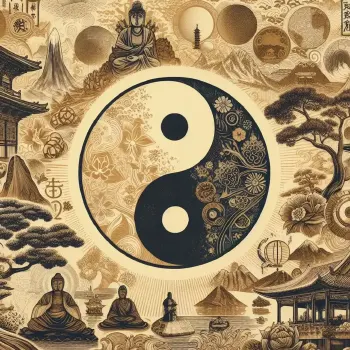
There’s an inward observation which is not the outward observation turned inward. The brain and the eye which observe only partially do not comprehend the total seeing. They must be alive completely but still; they must cease to choose and judge but be passively aware. Then the inward seeing is without the border of time-space. In this flash a new perception is born.

Eastern philosophy refers to the broad traditions of philosophy that originated in East and South Asia, including Chinese, Japanese, Korean and Indian philosophical schools of thought. Some of the major Eastern philosophies include Confucianism, Taoism, Buddhism, Hinduism, Jainism, and the various schools of Indian philosophy such as Nyaya, Vedanta, and Yoga.
Eastern philosophies are generally more oriented towards mysticism, intuition and holistic perspectives compared to Western philosophies. Some of the key concepts found in Eastern thought include dharma, karma, reincarnation, impermanence, the cycle of rebirth, the importance of meditation and mindfulness, non-violence, filial piety, and living in harmony with nature. Important Eastern philosophers include Confucius, Lao Tzu, the Buddha, Nagarjuna, Adi Shankara, and many more across the different traditions. Core differences from Western thought include a cyclical view of time and cosmology, a greater emphasis on ethics and relationships, and an acceptance of contradiction over binary either-or categorization of concepts.

A Clarification
Reflections on Two Converse Forms of Spirit
Teilhard de Chardin identifies two distinct spiritual paths: unity through “relaxation” (Eastern pantheism) where individual egos dissolve into a common foundation, and unity through “tension” (Western mysticism) where individuals become more themselves while converging toward a universal center. He argues that cosmic evolution favors the latter path, where true union differentiates rather than fuses, and calls for a new Western mysticism that combines personalizing love with cosmic totalization.

A Crisis in Consciousness
Terence argues that a solution to our collective planetary crisis has emerged, and it lies in a commitment to shamanistic, feminized, cybernetic, and caring forms of being—to take what each of us is in our very best moments and extend it to fill whole lifetimes.

A Problem of Strategy
Philosophy: East and West, Program 18
Watts argues that nuclear weapons are not only immoral but strategically stupid—destroying what one aims to control. Instead, wars should be fought with non-lethal, control-focused tactics like communication disruption or immobilization, making victory possible without mutual annihilation.

Affirming the Truths of the Heart
The Buddhist Teachings on Samvega and Pasada
Buddhism offers a profound solution to the existential suffering caused by aging, illness, and death. It cultivates samvega (a sense of urgency) and pasada (clarity and confidence) to transcend the meaningless cycle of birth and death, through developing noble qualities like generosity, virtue, and meditation that lead to the Deathless.

Alan Watts Interviews Laura Huxley
Alan Watts and Laura Huxley discuss the life and work of Aldous Huxley. They touch on his transformation into a skilled lecturer, his profound intellect and wide-ranging interests, his experiences with psychedelics, his relationship with Krishnamurti, and his ability to live fully in the present moment.
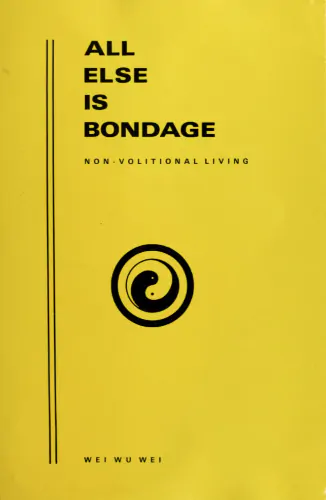
All Else Is Bondage
Non-Volitional Living
These thirty-four powerful essays, based on Taoist and Buddhist thought, constitute a guide to what the author calls “non-volitional living”—the ancient understanding that our efforts to grasp our true nature are futile. Wei Wu Wei explains these venerable spiritual traditions in the context of modern experience, using wit and considerable precision to convey their profound insight into the very nature of existence.

Amherst Press Conference
Mr. Fuller and Maharishi came from different traditions of knowledge, but both talked about the universal basis of life, the individual, and the cosmos.

At the Interface
Technology and Mysticism
What happens when a mystic and a futurist debate humanity’s fate? Alan Watts and Arthur C. Clarke tackle our future from two unique perspectives. Clarke champions technological solutions, from synthetic food to space exploration, while Watts argues for a spiritual evolution—a change in consciousness and our relationship with nature to solve our most pressing problems.

Bang or Whimper?
Way Beyond the West, Episode 8
Alan Watts explores humanity’s technological acceleration and its consequences. He contrasts the Taoist “leave nature alone” approach with our drive for progress, questioning whether either truly serves us. Watts suggests both perspectives miss the point by fixating on survival rather than present living. Our obsession with time’s passage, he argues, distracts us from fully experiencing life itself.

Beat Zen, Square Zen, and Zen
A classic essay on the many ways in which Western cultures have misunderstood and misapplied the essence of this profound and subtle understanding of life. Provides a core understanding of what Zen isn’t, which significantly contributes to an appreciation of the value of Zen in one’s life. A short but highly rewarding read.

Being Far Out
(Spiritual Alchemy)
Alan Watts touches upon a peculiar tendency wherein psychedelic drugs may ignite mystical experiences similar to those known in the Eastern philosophies. However, wheras Buddhism, Hinduism, and Zen accompany these mystical experiences with discipline in order to cultivate positive outcomes, psychedelically induced insights may lead to unhealthy misinterpretations and possibly even delusions of grandeur if not handled properly.

Beyond Success
Ram Dass investigates the effect of success upon our individual consciousnesses and how one may see beyond mere egocentric opportunism.

Birth, Death, and the Unborn
All the patterns we see around us in the world are projections of our minds. There is no way things should be, there is no way things shouldn’t be. But if humans can adopt a mental discipline in which they remain able to project patterns without becoming hung up on them, life for everyone will transform into a beautiful artwork.

Can Thought See Itself?
Brockwood Park 1981, Part 3
J. Krishnamurti challenges conventional education by questioning the nature of individual and collective consciousness. He examines how memory, thought, and the pursuit of becoming govern our lives, urging us to embrace transformation beyond intellectual activity. Through probing dialogue on the limits of traditional learning, Krishnamurti inspires a deep exploration of self-awareness, freedom, and authentic change.

Buddhism as Dialogue
Zen: the art of catching yourself in a cosmic game of tag! Watts unveils how Zen masters craftily set up double-binds, pushing seekers to chase their tails in pursuit of authenticity. It’s a merry-go-round of “be spontaneous!” and “don’t try!” until—pop!—the illusion of a separate self bursts like a soap bubble. In this whimsical dance of paradoxes, Watts reveals that the ultimate punchline of Zen is realizing there was never anyone there to get the joke in the first place!

Buddhism, The Only Real Science
Brahm argues that modern science has become dogmatic, unlike Buddhism’s humble search for truth. He humorously derides scientists’ arrogance while praising Buddhism’s rigorous objectivity and avoidance of biases. Quantum theory reveals reality as uncertain, not fixed measurements. Ultimately, the mind transcends material reality—the world fits inside it, not vice versa. Buddhism keeps science’s empiricism while avoiding its blinkered materialism, making it the true “science of mind.”

Bus or Tram?
Philosophy: East and West, Program 20
Rather than following moral tramlines of “ought” and “should,” Watts urges an experimental approach to ethics. He laments our collective anxiety to be right at all costs—even preferring death to wrongness—while lacking any positive vision beyond avoiding doom. Life could be beautiful if we dared imagine it so.

Your Consciousness is the Consciousness of all Humanity
Calcutta 1982, Part 1
Listen carefully: humanity teeters on the brink. Krishnaji says our technological prowess soars, yet our minds remain shackled by ancient conditioning. We cling to illusory individuality, creating conflict through our mental images of others. But we are not separate—we share a common consciousness. A profound inner revolution is imperative. By transforming ourselves, we transform the world. The stakes are immense—nuclear annihilation looms. Only through radical self-awareness and harmonious relationships can we forge a new path. The future hangs in the balance. Act now.

Clarity of Mind
Watts reveals a simple truth to his audience at the University of California: the mind's incessant chatter is the root of all that ails a mortal's soul. By silencing its din one can get to know life's mystery.
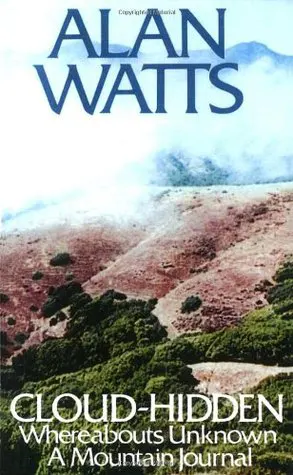
Cloud-Hidden, Whereabouts Unknown
A Mountain Journal
Over the course of nineteen essays, Alan Watts ruminates on the philosophy of nature, ecology, aesthetics, religion, and metaphysics. Assembled in the form of a mountain journal, written during a retreat in the foothills of Mount Tamalpais in California, Cloud-Hidden, Whereabouts Unknown is Watts’ meditation on the art of feeling out and following the watercourse way of nature, known in Chinese as the Tao. Embracing a form of contemplative meditation that allows us to stop analyzing our experiences and start living into them, the book explores themes such as the natural world, established religion, race relations, karma and reincarnation, astrology and tantric yoga, the nature of ecstasy, and much more.

Consciousness and Concentration
Way Beyond the West, Episode 4
Our ego-imprisonment creates needless strain. True awakening requires not heroic effort but gentle surrender—allowing mind to flow naturally. The universal consciousness awaits not through force but through letting go, like a boat drifting with the current rather than fighting against the tide.

Consciousness and Rhythm
This seminar explores consciousness as an intrinsic rhythmic interplay with reality. Watts challenges notions of separateness, asserting that individuals are not detached witnesses, but instead fundamentally unified with the cosmos. He encourages transcending ego and dualistic thinking to harmonize with the underlying patterns and dance that all differentiated experiences, including our own being, arise from. The goal is realizing our inherent interconnectedness with the seamless whole.

Contemplative Ritual
An Aquarian Age Religious Service
Alan Watts critiques sermonizing verbosity and champions contemplative rituals as paths to oneness with cosmic energy. Casting aside guilt and intellect, he beckons participants to listen, breathe, and hum into profound awareness. Meditation, he says, isn’t about effort but about letting thought dissolve into silence. Through sound, breath, and presence, he invites all to transcend ego and words, glimpsing the eternal present—a hymn to the harmony of self and cosmos.
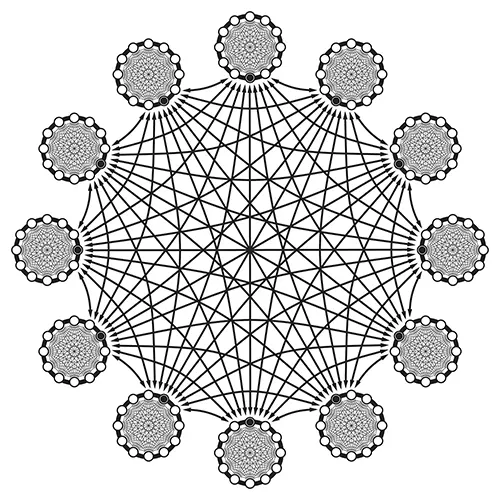
Cosmic Network
Alan takes us from the very small to the very large, explaining the interrelatedness of all things in the universe as a vast network which weaves us into a united yet unnamable divinity.

Crafting Destiny, Exploring the Unknown
Academy Award-winning actor Matthew McConaughey asks Sadhguru about karma, crafting one’s destiny, the connection between yoga and religion, and exploring the unknown. Sadhguru offers insights on how we should not confuse our lifestyle (a consequence of the times we live in) with life, the real thing!

Democracy in the Kingdom of Heaven
Does God really rule over humans like a monarch, or might the concept of divinity express itself as a drama through all of us?

Democratization of the Esoteric
Isn’t it funny how people who talk about spiritual matters often sound like they’re full of hot air? In this talk, Watts explores how true spirituality emerges through the ordinary and everyday, not through lofty preaching. He delves into Japanese aesthetics, particularly through the lens of seventeenth-century masters who “democratized the esoteric.” Through Haiku poetry, Zen teachings, and art, they revealed how beauty lies in suggestion rather than explanation, in imperfection rather than completion, and in embracing dissolution rather than clinging to permanence. The highest wisdom, Watts suggests, leaves no trace at all.

Destination Unknown
Enlightenment should not be viewed as a final destination or goal, but rather an endless unfolding where one increasingly embodies wholeness. Adyashanti examines how the ego perpetuates suffering through judgments and perceptions of incompleteness, and points to the freedom found in realizing the innate perfection in oneself and the world.

Developing an Inclusive Consicousness
Renowned yogi, mystic, and visionary humanitarian Sadhguru addresses points and concerns around inclusiveness raised by a panel of VPs and Google employees, explaining how individuals can create a quality of inclusiveness within themselves. By elaborating how such an attitude can impact our work places, homes, and communities, he provides practical thoughts and tools to create a more inclusive consciousness—the most important aspect that’s needed in the world today.

Diamond Way
Watts beckons us to peer past the veil, where remembering and forgetting engage in a cosmic dance. Traverse the paradoxical streams of jiriki and tariki, self-power and other-power, until the very concept of “I” dissolves like a dewtopped lotus. Prepare to be unshackled and uninhibited, for in the quest for nothingness lies the quintessence of everythingness.

Divine Madness
The madness of falling in love, though disruptive, can open our eyes to see the divine in our beloved. Pretending eternal passion as the sole basis for marriage builds impossible expectations. Might we not better cherish our loved ones by setting them free?

Does It Matter?
Essays on Man's Relation to Materiality
Alan Watts explores modern day problems from the outlook of his own philosophy in this collection of essays, inspired mainly by Mahayana Buddhism, Hinduism, and Taoism. Tackling problems of economics, technology, cooking, and clothing, he offers a fresh perspective which is all too foreign to Western society and implores us to get back in touch with the sensuous materiality of the world.
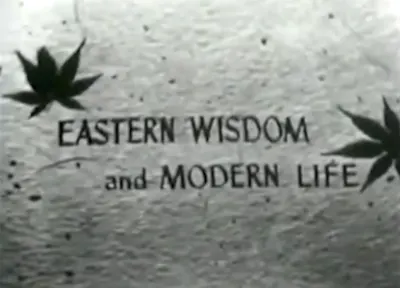
Man and Nature
Eastern Wisdom and Modern Life (Episode 1)
Alan Watts speaks on the contrast between classical Chinese and historic Western attitudes in regard to man's place in nature. Do we see ourselves as nature's conquerors or collaborators?

Things and Thinks
Eastern Wisdom and Modern Life (Episode 2)
Alan Watts presents an explanation of the East Indian idea of māyā: the division of the world into separate things and events is a work of human thought and not a fact of nature. Watts examines the disastrous consequences of confusing thought with fact.

Time
Eastern Wisdom and Modern Life (Episode 3)
This program looks at the East Indian concept of time and the illusion of living for the future as the tomorrow that never comes. Plans for the future are only useful for those able to live fully in the present.

The Void
Eastern Wisdom and Modern Life (Episode 4)
Buddhism symbolizes its basic spiritual experience as a void, but Alan Watts explains this must not be taken literally. Watts explores the void as a symbol of freedom and of a world feeling which can be described poetically though not logically as the "absolute rightness" of every moment.

The Silent Mind
Eastern Wisdom and Modern Life (Episode 5)
One who talks all the time can never hear what others say. And one who thinks all the time has nothing to think about except thoughts. Alan Watts examines the value of silent-mindedness or the practice of meditation in Hinduism and Buddhism.

On Death
Eastern Wisdom and Modern Life (Episode 6)
Alan Watts explores Buddhist ideas of the value of death as the great renovator, including the Wheel of Life, and the idea of reincarnation as it is understood by philosophical Buddhists.

Pain
Eastern Wisdom and Modern Life (Episode 9)
Alan Watts discusses the Hindu, Buddhist and Taoist ideas about physical and moral pain, emphasizing the art of accepting pain by ridding it of its contextual associations.

Nonsense
Eastern Wisdom and Modern Life (Episode 10)
Sense or meaning is a property ascribed to symbols rather than the real word. Alan Watts uses this differentiation as a prelude to the Taoist and Zen Buddhist idea of the perfectly "purposeless" life and its parallels in Christianity.

On Being Vague
Eastern Wisdom and Modern Life (Episode 11)
The idea of clear-cut "definiteness" reflects as a sharp and somewhat hostile attitude to life. In this talk, Alan Watts shows the value of the vague and gentle approach reflected in Far Eastern poetry and painting.

Omnipotence
Eastern Wisdom and Modern Life (Episode 13)
Watts explores the contrast between organic and mechanical world views and the difference between the growing process and the making process, and he explains why one corresponds to a democratic principle and the other to a monarchical hierarchy.

The Life of Zen
Eastern Wisdom and Modern Life (Episode 14)
A look inside Zen monastic life and practice reveals a culture of dialog and subtle humor between master and student.

Zen in Fencing and Judo
Eastern Wisdom and Modern Life (Episode 17)
A demonstration how the Taoist influence in Aikido and Judo also influenced swordsmanship.

Buddhism and Christianity
Eastern Wisdom and Modern Life (Episode 18)
Watts brings his expertise to bear in this presentation of Mahayana Buddhist and traditional Christian world views (he was once an Episcopal priest), and how to bring the two together.

The Discipline of Zen
Eastern Wisdom and Modern Life (Episode 19)
Enjoy an introductory explanation of Zen in this episode, including fundamental principles and the process of joining a monastery in search for answers.

Mahayana Buddhism
Eastern Wisdom and Modern Life (Episode 20)
What lies behind the fluttering forms we see? No clay, cries Buddhism, just a ceaseless dance devoid of stuff and substance. Grasping at ghosts within grants no relief, rather anxiety’s siege. Freedom rides life’s wave instead of taking cover. Be sage and bodhisattva mid melody, summoning the courtesan’s carefree bliss. Embrace experience utterly, no escaper you need be. For the void is full, if we still our need to fill.

Buddhism and Science
Eastern Wisdom and Modern Life (Episode 21)
Science precisely describes nature’s wiggly forms by classifying them into yes/no boxes to predict and control the environment. Yet there is ignorance in seeing life as a contest between order and chaos. These principles contain each other; their realization is awakening. Rather than a crude survival struggle, we can see nature’s forms as a joyful cosmic dance, like wise fishes delightedly circling in unity.

Eco Zen
Imagine realizing you are not just a wave, but the entire ocean! In this talk, Alan Watts skillfully guides us through Zen concepts, explaining how techniques like kōans break down our false sense of a separate self, leading to the profound realization that we are the whole flowing universe.

Ecological Awareness
When Alan Watts talked about the ‘mystical experience’ among scientific circles, he preferred to call it ‘ecological awareness’—referring to a state of mind in which a person ceases to feel separate from the environment in which he or she exists.

Ecstasy of Beings
For those intoxicated by life's seeming meaningfulness, there is only utter shattering of the false self, without compromise. The ego is annihilated in love for the divine beloved, so that one becomes egoless, the beloved all. Ecstasy is the greatest force, breaking the prison of selfhood to merge with the ever-present mystery. In solitude's wilderness within, one experiences God manifesting through all beings as oneself. Dogma is abandoned for pure knowing—the divine perfection working through human limitation.

Ecumenism
Teilhard envisions a future ecumenism born from humanity’s psychic maturation—a unity of spirit as the Earth itself evolves. Yet he warns that true synthesis cannot come from vague harmony or sentimental blending of faiths. Only by uniting faith in mankind with faith in a Christic, convergent God can a coherent cosmic religion emerge.
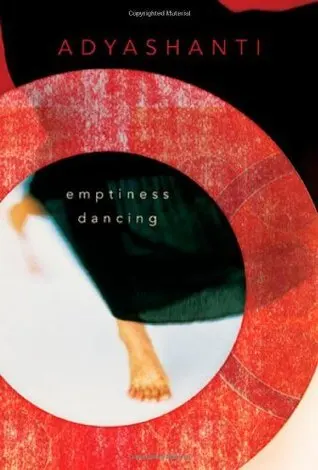
Emptiness Dancing
Who are you when you are not thinking yourself into existence? What is ultimately behind the set of eyes reading these words? In Emptiness Dancing, Adyashanti invites you to wake up to the essence of what you are through the natural and spontaneous opening of the mind, heart, and body that holds the secret to happiness and liberation. From the first stages of realization to its evolutionary implications, Adyashanti shares a treasure trove of insights into the challenges of the inner life, offering lucid, down-to-earth advice on topics ranging from the ego, illusion, and spiritual addiction to compassion, letting go, the eternal now, and more.
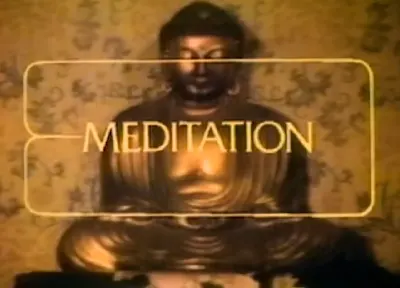
Meditation
Essential Lectures, Program 3
As Alan Watts explains, “A person who thinks all the time has nothing to think about except thoughts and loses touch with reality.” He covers basic mediation techniques, including listening without naming and chanting mantras.
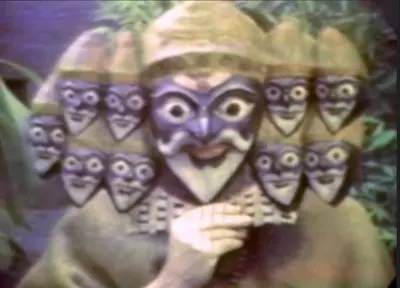
Cosmic Drama
Essential Lectures, Program 5
Alan Watts further explores the Hindu dramatic view of the universe, in which God plays all of the parts – all the while pretending not to know who he/she/it is!
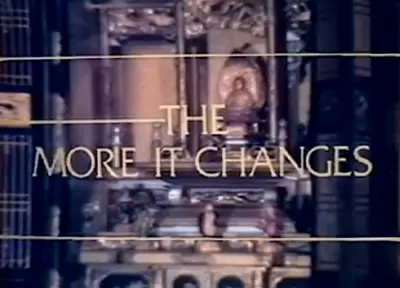
The More It Changes
Essential Lectures, Program 9
Alan Watts speaks on our fascination with reproduction through media, and on the far out notion that human beings may just be one star's way of becoming another star!

Clothing
Essential Lectures, Program 10
In this whimsical presentation, Alan Watts demonstrates a variety of cultural garb and points out how each influences the way we live and feel. His choices of attire include a western business suit, kimonos, and a sarong.

Face Your Problems Head-On
Life’s a cosmic game of peek-a-boo where the universe playfully startles itself. Embrace the depths psychedelics reveal, for they’re just the bedrock “you” under the veneer. Don’t fear the unconscious bogeys; waltz boldly into that abyss. This philosophical fun-house dares you to grapple with the great uh-oh: there’s no authority, it’s just you! But that’s enlightening, if you’re groovy enough to go with it.

Flow
Symbolic Reality vs. Real Reality
In a cosmic dance of consciousness, Alan unveils the paradox of meditation: forceful pursuit versus effortless surrender. He peels away layers of symbolic thought, revealing the raw essence of direct experience. Challenging spiritual ego and commercialized enlightenment, Watts advocates for a natural flow of sensory awareness. He invites us to question our cultural lenses and embrace a fluid reality—not of static objects, but of vibrant, ever-shifting energy. In this perspective, true wisdom emerges not from grasping, but from letting go.

Following the Middle Way
Awaken and find peace. Alan illuminates the path out of suffering with Buddhist philosophy as our guide. Through practicing the Noble Eightfold Path of skillful understanding, action, meditation, and concentration, we walk the Middle Way to freedom from clinging and awaken to our interconnected nature.
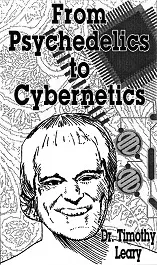
From Psychedelics to Cybernetics
Timothy Leary journeyed through Europe as head of the psychedelic revolution and consciousness research movement, and he invited some of his tagalong friends to this evening lecture held at the "Alte Feuerwache" in Mannheim to talk about the future evolution of humanity.

Future of Communications
Part 1
Our seeming separation is but a trick of the light, for in truth we are all one, connected like dewdrops on a spider's web. As technology traverses the illusory distance between us, it leads us back to the recognition of our inherent unity. Communication, once imagined as bridges between islands, dissolves as we awaken to find ourselves a sea; not separate, but an oceanic communion. We return home.

Future of Communications
Part 2
Watts suggests that the essence of communication lies not in its content, but in its style—a joyous dance akin to music. He argues that the seemingly irrelevant and meaningless aspects of life, so cherished by children, may hold the key to true wisdom. By embracing the absurdity and spontaneity of existence, we can rediscover the art of living and find delight in the grand cosmic play.

Future of Politics
Watts argues against the traditional Western concept of politics and the idea of a powerful leader governing a nation. Instead, he proposes a more Eastern approach inspired by the Tao Te Ching, which emphasizes flexibility, spontaneity, and water-like qualities in leadership. He encourages leaders to avoid using force and to embrace the natural flow of events, allowing the governed to live their lives freely. A society modeled after this philosophy would be more harmonious and functional, as opposed to societies driven by hierarchical structures and coercion.

Future of Religion
Alan Watts envisions a radical shift in religious thought, proposing a “religion of no religion” that transcends traditional doctrines and institutions. He argues for a departure from guilt-based teachings and future-oriented salvation towards a joyful, present-focused spirituality. Watts challenges the concept of individual ego, suggesting instead an interconnected view of humanity and divinity. He advocates for experiential rather than belief-based practices, emphasizing direct engagement with life and the recognition of innate buddha nature in all beings. This new approach blends Eastern and Western philosophies, aiming to unite people through celebratory gatherings and shared human experiences.

Game Theory of Ethics
What if seriousness is actually the ultimate prison and divine creativity looks suspiciously like play? Imagine existence as a cosmic game—part chance, part skill—where trust is the fundamental gambling chip. We’re not separate things, but continuous processes. The universe unfolds like a sublime musical composition: nonsensical, beautiful, utterly uninterested in predetermined outcomes. Our job? Embrace the game and risk everything.

Games of Simplicity and Complexity
Watts discusses how cultures develop increasingly complex art forms, rituals, manners, and religions, reaching extremes of refinement. Then innovators emerge who return to simplicity, until that too becomes overly refined. The wise person avoids both awe and hostility toward complexity and simplicity, recognizing these cultural developments as elaborate games people play.

Hidden Belief Systems
Alan talks about unexamined assumptions that underlie our commonsense beliefs which may cause confusion in our thinking about nature.

How Does a Jnani See the World?
In the shimmer between being and non-being, consciousness plays its fleeting games. The jnani watches this grand illusion without attachment—seeing the “I” as a temporary visitor, like morning dew on a leaf. All your cherished identity? Merely food-essence wearing a mask of permanence in the cosmic theater.

I Am That
In the heart of Mumbai’s bustling streets, a humble beedi shop owner named Sri Nisargadatta Maharaj delved deeply into the nature of existence, emerging with profound insights that have since captivated spiritual seekers worldwide. I Am That is a collection of his dialogues, where complex metaphysical concepts are unraveled with startling clarity and simplicity. Through conversations steeped in Advaita Vedanta, Maharaj guides readers beyond the illusion of individuality to the realization of their true, unbounded self. Each page invites you to question, reflect, and ultimately transcend the confines of the mind, offering not just philosophical musings, but a transformative experience that promises to change the very way you perceive reality. If you're seeking a profound spiritual awakening, I Am That is not just a book—it's a portal to understanding your true nature.

Image of Man
Watts presents two world myths—existence as artifact versus performance—and shines light on their gifts. A fascinating talk on embracing all roles in life's epic adventure.

In The Spirit
Unapologetically Human
Lex Hixon interviews philospoher Alan Watts, who reads from his autobiography and discusses his views on life and the human condition.

Insight and Ecstasy
Way Beyond the West, Episode 2
Alan says ecstasy is fleeting while insight endures. Drugs or mysticism may spark rapture, but real spirituality stems from seeing through the illusion of a separate self. This liberating insight dissolves imaginary problems, merging subject and object into a unified whole. Joy may follow, but penetrating truth remains.

Intellectual Yoga
“A Journey to Unthinking”—introducing Eastern traditions of yoga. Alan describes the entrance into the unspeakable reality, first from the East by practices of dhyāna yoga and zazen, and then from the West through the intellectual perspectives of Ludwig Wittgenstein and Spencer Brown. East and West all arrive at the same mysterious That Which Is Unspeakable.

Intelligent Mindlessness
Alan discusses ways in which Western civilization confuses symbols with reality and introduces meditation and its associated gadgets as tools to get in touch with reality. Then he encourages his audience to cast off their reliance on symbols by guiding them through various mantra in a half-hour demonstration of this intelligent mindlessness.

Interview with Erik Davis
In his final reflections, Terence McKenna explains how the cosmos is a plant-powered data download driving evolution toward a spiritualized future of the Omega Point. Psychedelics are the manual—get to work!

Journey to India
Buddhism sees life as drama—the Self playing hide and seek, getting lost for fun. It strips Hinduism for export, pursuing enlightenment not through beliefs but direct experience of who you really are beyond the separate ego. Through dialectic questioning, it demolishes all concepts you cling to, shaking your foundations until you let go into a state of insecurity that amazingly equals freedom. The teacher seems perfectly sane having nothing to hold onto, inspiring you to be alright that way too.

Landscape, Soundscape in Painting, Music, and Mystical Vision
During a seminar at the New College of Sausalito, Alan asks: what is an aesthetically satisfying composition—not just in the visual and auditory arts, but also in the arrangement of the universe?

Love of Waters
Philosophy: East and West, Program 27
Watts shares his insights on the timeless wisdom of the ocean, inviting listeners to join him on a journey of discovery and enlightenment. Through his words, he reveals the magic of the sea and its ability to wash away the stresses of life, and encourages us to embrace the rhythm of the waves and the eternal nature of the universe. Listen closely and you may uncover some of the ocean's secrets and gain access to its ancient wisdom.

Man and Nature in Chinese Philosophy
For the Chinese, particularly Taoists, nature isn’t something to conquer—it’s something we’re inseparable from. While Westerners see the world as a construction needing explanation (who built it?), the Chinese view it as a spontaneous process, like a ship creating its wake. We mistakenly think the wake moves the ship, just as we think the past controls the present. But nature, including human nature, flows by itself—no builder required! Our challenge isn’t controlling it, but learning when to let go.

Man is a Hoax
This talk plucks at the root of discontent in modern life. Watts reveals how society tricks children into chasing an always elusive happiness down the road, never to be found in the here and now. But ah, to truly live this moment! That is the secret. Let Alan dispel the myth of your separation from the joys inherent in our shared existence.

Manifestation of Avalokiteshvara
Avalokiteshvara: a multi-armed being embodying compassion and life's bewildering beauty! Like the centipede who tripped by overthinking its legs, we get stuck in ego-driven control. Alan urges us to embrace the spontaneous universe, find action in letting go, and realize we're interconnected parts of a grand, unfolding whole. True action arises effortlessly when we stop trying to control everything.

Manifesto to Cut the Big Hang-Up
America, fresh from its dream of progress, is choking on its own symbols—mistaking money for wealth and politics for reality. Alan Watts warns: we have the tech for paradise, yet prefer war, paranoia, and poker-chips of abstraction. His cure? Drop delusion, embrace vision, and build the feast already waiting on the table.

Mind Outside Brain
A Radically Non-Dualist Foundation for Distributed Cognition
We approach the problem of the extended mind from a radically non-dualist perspective. The separation between mind and matter is an artefact of the outdated mechanistic worldview, which leaves no room for mental phenomena such as agency, intentionality, or feeling. We propose to replace it by an action ontology, which conceives mind and matter as aspects of the same network of processes. By adopting the intentional stance, we interpret the catalysts of elementary reactions as agents exhibiting desires, intentions, and sensations. Autopoietic networks of reactions constitute more complex super-agents, which moreover exhibit memory, deliberation and sense-making. In the specific case of social networks, individual agents coordinate their actions via the propagation of challenges. The distributed cognition that emerges from this interaction cannot be situated in any individual brain. This non-dualist, holistic view extends and operationalises process metaphysics and Eastern philosophies. It is supported by both mindfulness experiences and mathematical models of action, self-organisation, and cognition.
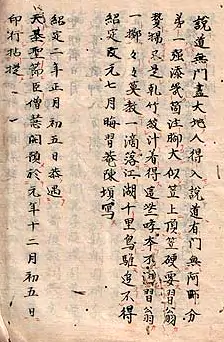
Mumonkan
The Gateless Gate
The Mumonkan (“Gateless Gate”) is a classic Zen Buddhist text of 48 kōans—mystical riddles or paradoxes used to spark insight. Compiled in thirteenth-century China, it challenges logical thinking and invites direct experience of reality beyond words, offering a gateway to sudden enlightenment—with no gate at all.

Natural Law
Philosophy: East and West, Program 33
Watts unwinds twisted views, freeing nature from Western chains. Tracking backwards in time, he reveals theories born of theology’s rigid womb and law’s worldly tomb. The veiled truth unfolds: regularities sip from the holy wellspring of our being, not external orders events obey. So too ethical waters flow from human nature’s course, not graven codes on stone. Our inner light, not outward laws, guides us rightly through terrestrial and cosmic seas.

Nature is the Center of the Mandala
Presented at the Shared Visions bookstore, Terence talks about humanity's path towards greater consciousness, and attempts to take a glance at what comes after the Omega Point.

No Japanese Zen, Thank You!
R.H. Blyth playfully probes a Zen master’s views on death and enlightenment. He concludes that true Zen isn’t about dogma or culture, but a “deep experience” of the present moment, where all distinctions melt away. It’s life’s pure, unadorned poetry.

Not What Should Be, But What Is
Alan reminds his audience that our mental image of the world is just an internal fairy tale loosely related to the truth of reality. Paying attention to our immediate sensory experiences can therefore help us lift this thought-tainted veil, an action which reveals the magic of being far better than any words ever could.

Of Itself So
Watts takes us on an odyssey to peer through the prism of East and West. Brace for a metamorphosis as familiar philosophical tenets are unraveled and recast in vibrant hues. From the celestial monarchies of old to the grand cosmic theater, diverse models of existence intertwine, beckoning us to shed our self-imposed blinders. An electrifying exploration of consciousness itself, this lecture tantalizes with the promise of inner awakening and long-sought liberation.
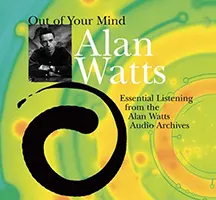
The Nature of Consciousness (Part 1)
Out of Your Mind 1
A seminar about “what there is.” Watts weaves together keen insights from science and spirituality to propose that existence is more like a game of hide-and-seek where we pretend not to recognize how self and other are interconnected.

The Nature of Consciousness (Part 2)
Out of Your Mind 2
Alan Watts suggests the sole identity with our egoic thoughts limits our consciousness, and that existence is an interdependent web in which consciousness plays a game of pretending to be separate. We must recognize the fundamental unity of self and world; that consciousness encompasses all experience. He provides various techniques aimed at dissolving illusory boundaries of the ego. Watts maintains that enlightenment requires no striving, since we already live in eternal presence and are manifestations of the divine reality, pretending forgetfulness for the adventure of self-discovery.

The Web of Life (Part 1)
Out of Your Mind 3
Alan Watts explores the interconnectedness and interdependence of all things. He asserts that human consciousness excludes an awareness of the whole, instead focusing narrowly and seeing the world as disjointed parts. Watts aims to broaden awareness to encompass the fundamental unity underlying apparent diversity. Using examples like music intervals, Chinese philosophy, and weaving, he elucidates the inseparability of opposites like order and randomness, sound and silence, self and other. Watts contends that a recognition of the implicit wholeness of existence brings peace, joy and harmony. He encourages a view of life that pairs an individual persona with an understanding that each person is an expression of the total cosmos.

The Web of Life (Part 2)
Out of Your Mind 4
A deep dive into the cosmic game of life. Alan says existence is an interwoven, rhythmic dance veiled in illusion, but when we peek behind the veil, we find life is actually playful—so come on in and join the party!

The Inevitable Ecstasy (Part 2)
Out of Your Mind 6
With cosmic wit, Watts unveils the mystic truth: our selves are but specks of dust, our lives a flicker in eternity's eye. Yet in this vanishing wisp of consciousness, we may glimpse our true nature—the boundless void that births the ten thousand things. Facing the abyss with laughter, we find liberation in the inevitable ecstasy of dissolution.

The World as Just So (Part 1)
Out of Your Mind 7
Alan Watts lectures on the origins and essence of Zen, a branch of Mahayana Buddhism that spread from India to China and Japan. He discusses key concepts like satori, no-mind, and non-attachment, and emphasizes Zen's spontaneity, directness, and humor. Major figures covered include Bodhidharma, Hui-neng, Rinzai, and Dogen. Watts aims to illuminate Zen's appeal in the West and convey the feeling of its practices.

The World as Just So (Part 2)
Out of Your Mind 8
This lecture on Zen Buddhism describes the Japanese Zen monastery, meditation practices, kōans used by masters to guide students, and the enlightenment experience. Watts explains how masters help students break attachment to ego through impossible tasks. He contrasts Bankei's simple "unborn mind" Zen with Hakuin's intense kōan training.

The World As Self (Part 1)
Out of Your Mind 9
Alan parts the veil on Hinduism's mystical heart. The cosmos is līlā, a divine dance between Brahman, the eternal Self, and māyā, the veiling illusion of multiplicity. We are That: Atman, non-separate from Brahman. Liberation dawns when we wake from māyā's spell of separateness to realize our timeless unity with the One beyond all opposites.

The World As Self (Part 2)
Out of Your Mind 10
The journey of self-realization follows the winding path inward, to the place where you already are. As the egoic illusion falls away, the universe unveils your true face. Trust in the guru's skillful means, which trick the mind into its own liberation. Embrace each stage of life with sincerity, not forcing but allowing insight to dawn in its own time. Know yourself to be That, the eternal Self of all that is.

The World as Emptiness (Part 1)
Out of Your Mind 11
With Buddha as our guide, Watts leads us along the unfolding petals of the Eightfold Path—past the thorns of suffering, through the mists of illusion, and into the open arms of change. Life, impermanent as the wind, is ours not to grasp but to embrace. Accept each fading blossom without clinging, observe each passing cloud without craving, and suffering falls away like autumn leaves. We are left not with answers, but with questions that bloom into understanding.

The World as Emptiness (Part 2)
Out of Your Mind 12
Alan Watts talks about the Buddhist perspective on change and impermanence. He discusses how Buddhism encourages detachment from the world of change and pursuit of nirvana, the state beyond change. However, clinging to nirvana as something permanent is still seeking permanence. True liberation comes from fully accepting change and transience, including death. The void or emptiness doctrine in Mahayana Buddhism elaborates on this by teaching that reality escapes concepts. Freedom comes from letting go of fixed ideas and accepting the void.

Painting the Sidewalk with Water
Talks and Dialogues About Non-Duality
These lively talks and dialogues are about seeing through the illusion of separation and waking up to the boundless wholeness that is all there is. Joan's approach is open and explorative, questioning all attempts to conceptually grasp and frame the movement of life. She talks about seeing through the stories and beliefs that create our human suffering and waking up to the simplicity of what is. This book beautifully dissolves the apparent dichotomy between the uncompromising "this is it, just as it is" message of radical non-duality and the emphasis on "being here now" that is found in many meditation teachings. Joan has an affinity with Buddhism, Advaita, and radical non-duality, but she belongs to no tradition. In these talks and dialogues, she takes on such perennial questions as, Is there a way out of personal and global suffering? Can we choose to stop addictive and destructive patterns? Does being awake take effort, vigilance, and practice, or is it effortlessly and unavoidably always already the case? What happens when we die?

Parallel Thinking
Philosophy: East and West, Program 19
What a tickling trickster the universe is! As Watts wanders down philosophical byways, tales emerge of those healed by harmonizing body and world. Yet we teach children to twist themselves to fit odd ideals. Tension tunnels through society, our “civilizing” ways quite uncouth! Might we reconsider, relax our willful ways? Observantly ambling amidst being's little blooms, we rediscover unity in the unruly diversity—finding wisdom whispering within, inviting us to dance delightfully with life’s flowing forms.

Path of the Heart
Ram Dass explores love as both a spiritual path and a trap—how relationships, methods, and even grief can awaken the boundless love within, yet often become addictive. The work is to rest in love itself, free from clinging, keeping the heart open to all beings without exception.

Philosophy of Nature
The physical world isn’t stiff and solid—it’s wiggly, playful, ever-changing. Our error lies in boxing it up with labels and straight lines. Reality, like music or mist, slips through grasping hands and laughs when we try to hold it still.

Play and Sincerity
In this cosmic game of peek-a-boo, Watts unveils the proscenium arch of our minds—that thin veil between play and seriousness. The wise discover the joke: our frantic search for sincerity peels away mask after mask until—surprise!—we find nothing! And in that delicious emptiness, the ultimate paradox unfolds: when we realize we're all play, we become utterly genuine. The angels fly, you see, because they take themselves lightly.

Play and Survival
Life's a game where we forget we're the cosmic nerve-endings of an eternal now. So stop furrowing your brow—there's divine frivolity in the endless, meaningless music of being. Drop your masks and dance lightly as angels, for you are the Joker in the pack. It's all a joke, and the joke's on you!

Polar Thinking
This talk explores how Zen flips everything on its head—it creates religion by abandoning it, finds the sacred in the ordinary, and sees the whole universe in simple things like a fan or bamboo painted in the corner of a page. It’s about discovering freedom through discipline and wisdom through jokes, where every small moment contains everything else.

Power of Space
Weaving connections between Eastern thought and modern science, Alan Watts explores the wonder of space. For him, space is no mere emptiness but a cosmic tapestry integral to existence. He draws parallels between space and the Buddhist void, seeing both as the interwoven ground of being that allows consciousness to emerge.

Problems of Meditation
Watts illuminates meditation as a vehicle to transcend the illusion of individuality and realize one’s intrinsic unity with the cosmos. He unveils a symphony of sacred techniques—from breath awareness to primordial sonic mysticism—as potential pathways to the ineffable experience of non-dual consciousness. By surrendering the ego’s compulsive control, one may ultimately arrive at the paradoxical fruition of subject and object coalescing into one unconditioned field of pure witnessing awareness.

Promises and Pitfalls of the Spiritual Path
The spiritual path is a groovy ride, my friends. We expected enlightenment right away in the sixties, but it’s a longer trip than that. We got high on siddhis and phenomena, but true freedom demands surrender of who you think you are. It’s a journey of being human, embracing suffering with joy. Use every experience as your curriculum to cultivate compassion and presence. Stay true to yourself and let your life be your message.

Psychology of Mystical Experience
Life and death, pleasure and pain, light and dark—Alan Watts playfully ponders how supposed opposites are really inseparable. He invites us to stop stressing about oblivion, for the “nothingness” of death births new life, just as night births stars. He urges us to let go of human anxiety over existence itself. Why fret when we can simply hum and realize the dance of being? Life’s profound ballet unfolds when we embrace the yin-yang harmony of opposites.

Psychotherapy and Metaphysics
This seminar explores the concept of consciousness and its limitations. Watts discusses the lack of depth in certain analytical approaches, highlighting the need for individuals to find harmony with life and death. He emphasizes the enrichment that comes from realizing the significance of everything and the potential healing effects of altering our state of consciousness. Watts also touches on the influence of scientific naturalism on modern psychiatry and shares a personal account of a transformative experience.

Reality, Art, and Illusion
Join Alan as he expresses the meaning of life through the Hindu-Buddhist idea of reality as a divine game of hide-and-seek. "Life is not ultimately serious," Watts argues. By embracing the fluidity of identity and recognizing our interconnectedness, we can creatively engage with existence as impermanent, unified, and filled with playful potential. Accessible yet philosophically rich, these decades-old lectures offer timeless insights on the nature of reality.

Realizing Human Potential
What untapped gifts lie dormant within us? Aldous Huxley digs for hidden treasure in the human psyche. He proposes mining the world's traditions to unearth practical techniques for actualizing our latent potential. From revamping education for enhanced perception and creativity, to fostering awareness and kindness, Huxley lays out a thought-provoking vision for human flourishing.

Reconciliation of Opposites
Philosophy: East and West, Program 17
Alan Watts reveals how Eastern thought embraces the wiggly dance between opposites. Buddhist masters nudge their students with banter to blend inner and outer worlds, topple rigid beliefs, and allowing freedom to rise from the rubble of shattered assumptions. In the end, clinging dissolves into flowing and suffering transforms into living.

Relevance of Oriental Philosophy
Alan Watts discusses the limitations of Western theology, contrasting it with Eastern philosophies. He argues that the Western concept of God as a separate, authoritarian figure is problematic and that true faith involves letting go of fixed ideas about God. Watts suggests that Eastern ideas, such as the unity of opposites and the illusory nature of the ego, can provide a more meaningful understanding of spirituality and existence.

Religion Of No Religion
Alan Watts explores the idea of the bodhisattva doctrine in Mahayana Buddhism, which suggests that true enlightenment is found in the ordinary, secular world. He delves into the concept of jiji muge, the mutual interdependence of all things, where every person, object, and event is both insignificant and essential to the whole. Watts argues that true spirituality lies in recognizing the sacred in the mundane, without the need for overt religious symbolism or ritual.

Return to the Forest
Philosophy: East and West, Program 5
Watts explores Joseph Campbell’s insights on spiritual evolution through different cultural phases. As societies moved from hunting to farming, religion shifted from shamanic individual experiences to structured, communal worldviews. When these social frameworks crumble—as in our modern era—we’re cast back into the forest of self-discovery. The wise seeker must abandon societal maps and wander alone into direct experience, finding what countless mystics have found: that true liberation comes not through authority, but through firsthand encounter with reality itself.

Is There a Way Out of the Crisis in the World?
Saanen 1979, Part 1
Is there another kind of thinking which is not about something? When you give attention completely, is there a center from which you attend? Can self-centered problems be solved without a different quality of thinking? When there is no tomorrow, psychologically, what happens to the quality of your mind? Then what is your relationship to another? In thinking together, is there opposition? Where does thinking together lead in my relationship to another?

Is There Security At All, Psychologically?
Saanen 1979, Part 3
Has the desire for psychological security taken over physical demands? Is there security in a belief, ideal or experience? Can you listen so completely that you see the absurdity of living in illusion and end it? Can we stay with fact and have no relationship to non-fact? What is the quality of the mind that is facing what is happening? If you have no images, what is your relationship to the mind which is still seeking security? In thinking together, isn't there total security? When you put aside choice, is there insight into the whole of illusion?

Sacred in the Everyday
Ram Dass invites us on a journey of awakening, where life's experiences become the fuel for our spiritual growth. He explores the art of being fully present, embracing paradoxes, and cultivating a heart that loves unconditionally. Ultimately, he suggests that true freedom lies in quieting the mind and resting in the depths of our being, where we can appreciate the beauty of existence in all its forms.

Satori Before Singularity
What if future AIs achieved enlightenment before world domination? Shanahan suggests a truly advanced AI might transcend the human ego, dropping our obsession with the “self.” Instead of triggering a runaway intelligence explosion, such a being could attain satori: a Zen-like peace that halts the singularity in its tracks.

Seeing Through The Illusion
Ram Dass reveals how our senses and thoughts dupe us about the essence of reality. By liberating our consciousness from clinging to the body and mind, we can plunge into the primal energy coursing through all form. This raw perception exposes our supposed detached self as a fantasy.

Sense of Nonsense
In this public radio broadcast, Alan explores the origin of the desire for meaningfulness. In the search for satisfaction, what is it that is really sought for or yearned after? The talk turns from academic discussion into poetry. What is the meaning of significance?

Sex in the Church
Watts tackles the everlasting taboo of sex in Western religion, and suggests we thank our prudish parents for making it so interesting.

Shamanology
Terence McKenna illuminates the world of Amazonian shamanism and its visionary brew, ayahuasca. He presents these plant hallucinogens not as simple drugs, but as sophisticated indigenous technologies for exploring consciousness. McKenna argues they are vital tools for evolving language, deconditioning us from cultural myths, and navigating the future of human evolution as we journey into the cosmos and the imagination.

Solid Emptiness
Alan explores Mahayana Buddhism and the concept of śūnyatā (“emptiness”), emphasizing it as freedom from clinging, not nihilism. He explains how language and the illusion of a separate self cause suffering and contrasts this with the fluid, interconnected reality of life. Enlightenment, he argues, is embracing life’s impermanence without attachment, unlocking creativity, joy, and presence. Far from passive, this mindset energizes individuals, offering a remedy to Western culture’s obsession with control and anxiety.

Speaking Metaphorically
Terence McKenna explores how psychedelics can alter language and consciousness, unlocking a transformative phenomenon at the heart of human evolution. He envisions a shift towards a visible, gestalt-like language of meaning that will profoundly reshape culture, enabling our species to transcend earthly confines and venture into the cosmos. Proposing psychedelics as a pheromonal regulator for collective consciousness, McKenna suggests this archaic linguistic revolution holds the keys to our future, bridging the gap between nature and technology in ways that could determine the very destiny of humanity.

Spiritual Authority
Quit striving so hard spiritually, Watts implores. You're already the Buddha you seek! Your constant efforts to improve yourself are like trying to bite your own teeth. So relax! Meditation isn't about suffering through boredom or bragging about pain. Instead, penetrate the moment and have fun watching yourself be. Spiritual enlightenment isn't some far-off goal—it's already here, now. Dig it!

Study of Asia
Philosophy: East and West, Program 25
Has our techno-scientific society created problems it can't solve? Watts says the West excels at amplifying every folly humans are capable of, yet when it comes to answering the big questions we're like a dog chasing its tail. Perhaps solutions lie not in narrow scholarship, but in re-examining our own premises through imaginative engagement with Asian worldviews. We need protected spaces where scholars can play with concepts freely—not for any practical purpose, but for the sheer joy of ideas, because creative insights arise unpredictably from the useless act of contemplation.

Swimming Headless
Watts explores the Taoist concept of Te, or virtue, as a kind of natural excellence arising when one lives in harmony with the Tao. He examines how this spontaneous virtue contrasts with contrived virtue, relating it to wu wei and the power that comes from flowing with rather than against the river of existence.

Talk on Non-Self (Anattā)
Ajahn Brahm uses the metaphor of a lotus flower to describe the path of meditation leading to enlightenment. He guides the listener inward, petal by petal, until reaching the very heart—the ultimate truth of non-self and emptiness. With his characteristic wit and wisdom, he reveals how all phenomena are impermanent processes devoid of a permanent essence. Though initially confronting, Brahm suggests this teaching contains the song of freedom itself, destined to liberate those who have heard it.

Tao Te Ching
Written more than two thousand years ago, the Tao Te Ching is one of the true classics of spiritual literature. It is a guide to cultivating a life of peace, serenity, and compassion. Through aphorisms and parable, it leads readers toward the Tao, or the “Way”: harmony with the life force of the universe.

Taoist Way
This talk explores the Taoist philosophy of living fully in the present moment without attachment to the past or future. According to Watts, following the Tao involves acting spontaneously and effortlessly without forcing, appreciating the interconnected nature of all things, and seeing through illusions of the ego and continuity of self across time. The goal is to experience each instant purely without getting caught up in intellectualizations.

TechGnosis
Myth, Magic, and Mysticism in the Age of Information
How does our fascination with technology intersect with the religious imagination? While the realms of the digital and the spiritual may seem worlds apart, esoteric and religious impulses have in fact always permeated (and sometimes inspired) technological communication. Erik Davis uncovers startling connections between such seemingly disparate topics as electricity and alchemy; online role-playing games and religious and occult practices; virtual reality and gnostic mythology; programming languages and Kabbalah. The final chapters address the apocalyptic dreams that haunt technology, providing vital historical context as well as new ways to think about a future defined by the mutant intermingling of mind and machine, nightmare and fantasy.

Technical Philosophy
Alan Watts critiques modern academic philosophy's arid, technical style and champions Abraham Kaplan's book, The New World of Philosophy, for accessibly surveying diverse philosophical perspectives across cultures. Watts praises Kaplan's work for reviving philosophy's vital role in exploring profound human questions through a more holistic, integrative approach beyond narrow scholasticism.

Terence McKenna’s Final Esalen Gathering
Less than a week after undergoing brain surgery in which part of his skull was removed, Terence appeared one last time at Esalen to talk about his confrontation with mortality.

The Advanced Course
Got wisdom? Let Ram Dass be your guide to enlightenment. He takes us on a trip through changing myths, social action, peaceful protests, corporate responsibility, and more. It's all part of life's fascinating dance. Suffering arises when we cling to the intellect. But we find freedom when we open our hearts, embrace oneness and see the perfection in now. So tune in, turn on and wake up! Peace, love and understanding await.
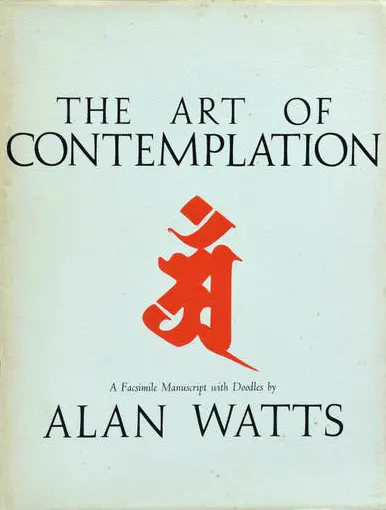
The Art of Contemplation
A manuscript with original doodles, handwritten by Alan Watts. It explores contemplation as awareness of the present moment without judgment. Watts advocates accepting what is happening now rather than trying to transform the mind. He sees contemplation as aligning with the flow of nature. Published as a limited edition by the Society of Comparative Philosophy.
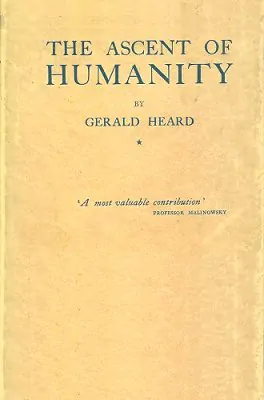
The Ascent of Humanity
An Essay on the Evolution of Civilization from Group Consciousness Through Individuality to Super-consciousness
Gerald Heard presents a novel view of history and civilization as the evolution of human consciousness, moving from collective group awareness to individual self-consciousness and beyond. Heard argues that primitive humans were deeply connected to their communities and less aware of individuality, while modern humans are highly self-conscious but separated from their unconscious minds and one another. He suggests that further progress requires advancing towards "superconsciousness," where individuals bridge these divides.

The Bhagavad-Gita, The Song of the Lord
Philosophy: East and West, Program 15
Alan Watts explores Gandhi’s devotion to the Bhagavad Gita, unpacking its battlefield setting, Hindu ideas of the self as Ātman–Brahman, the illusory nature of fear and motive, and Krishna’s call to act from one’s true vocation: freely, without attachment to outcomes.
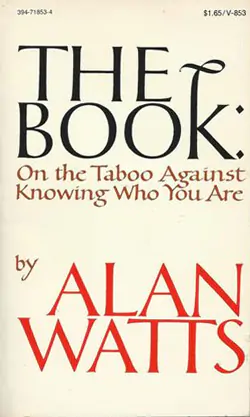
The Book
On The Taboo Against Knowing Who You Are
At the root of human conflict is our fundamental misunderstanding of who we are. The illusion that we are isolated beings, unconnected to the rest of the universe, has led us to view the “outside” world with hostility, and has fueled our misuse of technology and our violent and hostile subjugation of the natural world. In The Book, philosopher Alan Watts provides us with a much-needed answer to the problem of personal identity, distilling and adapting the ancient Hindu philosophy of Vedanta to help us understand that the self is in fact the root and ground of the universe. In this mind-opening and revelatory work, Watts has crafted a primer on what it means to be human—and a manual of initiation into the central mystery of existence.

The Constitution of Nature
Philosophy: East and West, Program 28
Watts unfurls three cosmic tapestries woven by ancient minds: the Western world's vision of nature stitched as a crafted cloth, India's playful drama where God dances every part, and China's Taoist masterwork of nature flowing free like mountain streams. Though the West's thread gave rise to technological gifts, it tangled our hearts. Now the Orient's ancient organic insight whispers fresh hope, kindling new fires of wisdom within.

The Future of Ecstasy
Watts envisions a future where society, after a global crisis, embraces ecstasy as a vital human need. Rejecting the “uptight” culture of the past, people now cultivate ecstasy as a skilled art. They learn to surrender to life’s vibrations, transforming ordinary consciousness and finding profound joy by navigating their experiences instead of resisting them.

The Gateless Gate
Watts explores Zen Buddhism's unconventional approach to conveying enlightenment through seemingly mundane statements or actions instead of words or teachings. He delves into various Zen stories and their commentaries, revealing how direct pointing at reality can lead to a profound realization beyond the limits of language and conceptual thinking.

The Individual as Man/World
Originally delivered as an impromptu lecture for the Social Relations Colloquium at Harvard University, this essay explores incompatible views of human identity—are we free agents or passive products of external forces? Watts argues we should see ourselves not as isolated egos nor as puppets, but as interdependent “organism-environment fields,” inseparable from our context. This view, he suggests, could bring science and subjective experience into alignment.

The Joyous Cosmology
What kind of a theory of the universe would it take for us to willingly accept the pain, turmoil, chaos, heartbreak, and suffering that comes with the state of being a consciously aware and individuated Self?
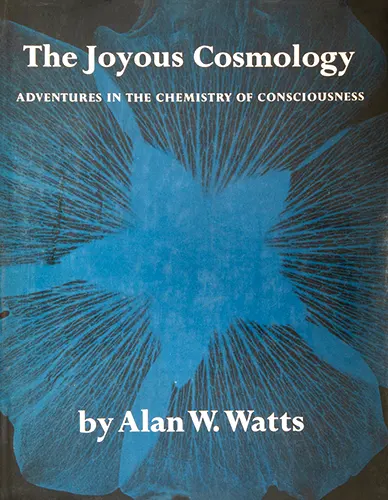
The Joyous Cosmology
Adventures in the Chemistry of Consciousness
The Joyous Cosmology is Alan Watts’ exploration of the insight that the consciousness-changing drugs LSD, mescaline, and psilocybin can facilitate when accompanied with sustained philosophical reflection by a person who is in search, not of kicks, but of understanding. More than an artifact, it is both a riveting memoir of Alan’s personal experiments and a profound meditation on our perennial questions about the nature of existence and the existence of the sacred.
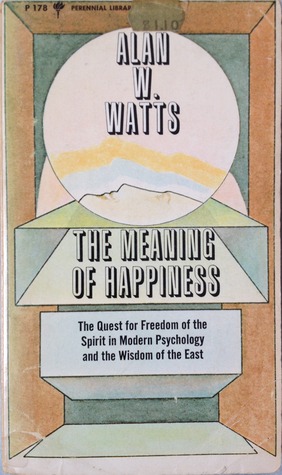
The Meaning of Happiness
The Quest for Freedom of the Spirit in Modern Psychology and the Wisdom of the East
Deep down, most people think that happiness comes from having or doing something. Here, Alan Watts offers a more challenging thesis: authentic happiness comes from embracing life as a whole in all its contradictions and paradoxes, an attitude he calls the “way of acceptance.” Drawing on Eastern philosophy, Western mysticism, and analytic psychology, Watts demonstrates that happiness comes from accepting both the outer world around us and the inner world inside us—the unconscious mind, with its irrational desires, lurking beyond the awareness of the ego. Although written early in his career, The Meaning of Happiness displays the hallmarks of his mature style: the crystal-clear writing, the homespun analogies, the dry wit, and the breadth of knowledge that made Alan Watts one of the most influential philosophers of his generation.

The Miracle of Consciousness
Discover profound insights in this workshop, where Ram Dass emphasizes the importance of finding balance amidst suffering and awakening to deeper consciousness. He discusses how embracing suffering with compassion can lead to personal transformation and a broader understanding of universal suffering. This process fosters a sense of interconnectedness and the realization that personal freedom contributes to the collective well-being. The ultimate aim is to awaken to a higher state of awareness, allowing us to navigate life with peace and profound joy.

The Natural Environment and Religion
Watts critiques our scholastic obsessions and urges an experiential approach to life, blending the spiritual and concrete like a Zen gardener planting mysteries among truths. He laments our sterile materialism and bureaucratic rigidity, championing a dance with risk, creativity, and nonverbal wisdom. With tales of mystics, scientists, and madmen, he celebrates the spice of oddballs, the necessity of nonsense, and the ineffable richness of being alive.

The Natural State, Part IV
U.G. Krishnamurti emphatically denies the existence of self, spirit or mind, asserting that only the physical body and natural world exist. He states all human experience and understanding derives from acquired knowledge, not direct perception, and attempts to free oneself through spiritual or intellectual means are futile, as thought itself is a product of the conditioned mechanism. Krishnamurti advocates leaving the body's natural functioning alone, without interference from the conceptualizing mind.
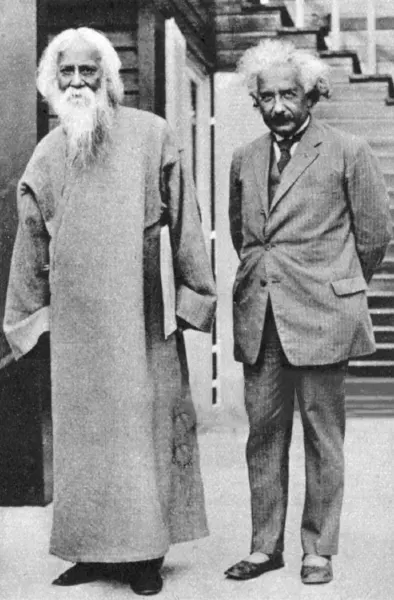
The Nature of Reality
Albert Einstein invited Rabindranath Tagore to his home in Caputh, near Berlin, for a stimulating intellectual conversation on the topic of science and religion. According to Einstein's step-son-in-law Dmitri Marianoff, “it was interesting to see them together—Tagore, the poet with the head of a thinker, and Einstein, the thinker with the head of a poet. It seemed to an observer as though two planets were engaged in a chat.” The conversation was recorded and subsequently published in the January 1931 issue of Modern Review.

The Nature of Things
David Bohm discusses his perspective on theoretical physics and quantum mechanics, including the contradictions between relativity and quantum theory. He explains his theory of the implicate and explicate order to describe the wholeness and interconnectedness of matter. Bohm relates this to consciousness, self-deception in thought, and Krishnamurti's teachings on awareness to transform individual and collective conditioning.

The Old and the New Vision
Herbert Günther reveals how ancient Tibetan Buddhist texts offer insights into consciousness that parallel modern scientific discoveries. The Tibetans viewed humans not as isolated beings, but as expressions of universal intelligence, describing three levels: the physical body, an experiential “phantom-like” body, and a mysterious deep structure. Their texts suggest that the universe itself is conducting a grand experiment through human consciousness—playfully creating new possibilities and evolving toward higher forms of order.
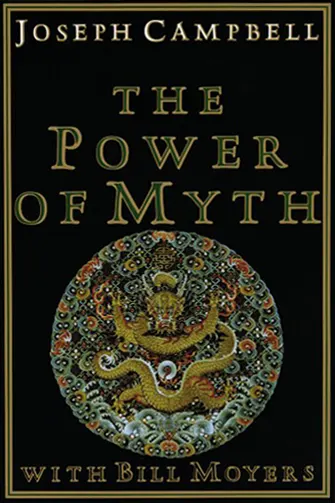
The Message of the Myth
The Power of Myth, Part 2
Bill Moyers and mythologist Joseph Campbell compare creation myths from the Bible and elsewhere, and talk about how religions and mythologies need to change with time in order to maintain their relevance in peoples’ lives.

The First Storytellers
The Power of Myth, Part 3
Bill Moyers and mythologist Joseph Campbell discuss the importance of accepting death as rebirth as in the myth of the buffalo and the story of Christ, rites of passage in primitive societies, the role of mystical Shamans and the decline of ritual in today’s society. Campbell explains how ancient myths were designed to “put the mind in accord with the body, and the way of life in accord with the way nature dictates.” As one example, Campbell explains how myths bring humans to understand and accept birth, growth and death.

Sacrifice and Bliss
The Power of Myth, Part 4
Bill Moyers and mythologist Joseph Campbell discuss the role of sacrifice in myth—including a mother’s sacrifice for her child—and the need for all of us to find our sacred places in the midst of today’s fast-paced world.

Masks of Eternity
The Power of Myth, Part 6
Bill Moyers and mythologist Joseph Campbell discuss commonalities in every culture that create a need for God, and the symbolism of circles in life and literature.

The Primacy of Direct Experience
In this, the closing session of a June 1994 workshop, Terence McKenna tells us directly what he thinks this human life is actually about: the primacy of direct experience; a focus on the present-at-hand.

The Problem with Christianity
Alan says Christianity is ultimately a solemn faith which sees the world's essence as inherently tragic. Within its core, he illuminates three tenets: the timeless gulf between creator and creature, the ceaseless battle of good versus evil, and the everlasting division amongst individuals.

The Psychedelic Experience
Alan says psychedelics like LSD and psilocybin can provide religious insight, but should be used with spiritual discipline to integrate the mystical experience into everyday life. He critiques psychiatry’s lack of metaphysical grounding and calls for medical and religious professionals to work together on psychedelics. Watts emphasizes psychedelics’ potential as a bridge between mystical and ordinary consciousness, while warning against spiritual inflation or romanticizing substances. Overall he presents a balanced perspective, exploring psychedelics as tools for self-knowledge that require wisdom in application.

The Smell of Burnt Almonds
Watts recounts a woman's experience of mystical insight under anesthesia and her yearning to regain it. He suggests not seeking the experience, but realizing one's ordinary state is still part of the universal harmony glimpsed then. Like the disciple who ignored the mahout's warning because all is Brahman, we should heed our present feelings too as part of the whole.

The Sound of Rain
A personal journey to Japan reveals that the heart of Zen is not a complex philosophy, but a direct experience of reality. Alan finds that, like the sound of rain, the universe needs no translation. True understanding arises from perceiving life as it is—a unified whole where everything from blooming flowers to our own consciousness is part of a single, magnificent happening.
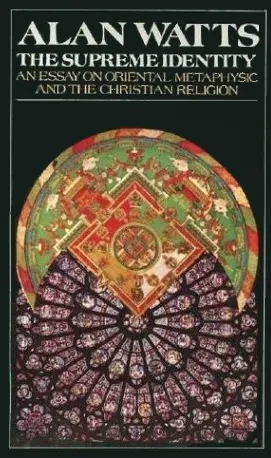
The Supreme Identity
An Essay on Oriental Metaphysic and the Christian Religion
One of the most influential of Alan Watts’s early works, The Supreme Identity examines the reality of civilization’s deteriorated spiritual state and offers solutions through a rigorous theological discussion on Eastern metaphysic and the Christian religion. By examining the minute details of theological issues, Watts challenges readers to reassess the essences of religions that before seemed so familiar and to perceive Vedantic “oneness” as a meeting ground of all things—“good” and “evil.” In addressing how religious institutions fail to provide the wisdom or power necessary to cope with the modern condition, Watts confidently seeks the truth of the human existence and the divine continuum.

The Symbolic and the Real
Though symbols empower us, they veil our oneness with the Infinite. Disconnection brings madness. Let us instead affirm our individuality while tasting universality, knowing we are the cosmos branching out to behold itself. We wave as the cosmos waves, seeding selves yet sprouted from the Source. Not apart but of the Whole, we wander home.

Images of God
The Tao of Philosophy 2
Alan Watts talks on the impact of various models of the ultimate reality, and the contrasts between male and female symbolism.

Myth of Myself
The Tao of Philosophy 5
The ferryboat philosopher riffs on how we're not skin bags with an “I” inside, but the whole cosmos peeking out! Says we feel separate because we ignore our cosmic “floodlight” consciousness. But we're waves in the ocean, apples on the tree. Realizing this brings real joy.

Man in Nature
The Tao of Philosophy 6
How should we view nature—as machine, drama, or organism? Alan says we must trust its organic patterns, explaining that the borders of our imagined selves determine our relationship to the environment and our role in the universe. So go with the flow, be purposeless, let the Tao wash over you like wild geese vanishing into clouds.

Symbols and Meaning
The Tao of Philosophy 7
Alan Watts joyfully upends assumptions about reality, using wit and wisdom to reveal how existence is a dazzling, musical mystery beyond language—not a problem to be solved but an unfolding to be experienced.

The Universe Enlightened
Harding argues that awakening isn’t private but cosmic: to truly know yourself is to rediscover a living, intelligent universe. Modern science, he claims, quietly supports this ancient vision. When the illusion of a separate self dissolves, the universe itself wakes up as home, alive and coherent.

The Value of Psychotic Experience
Watts questions society’s rigid definitions of sanity and madness, arguing we should embrace diverse states of consciousness rather than forcibly conform people. Drawing from Zen and Eastern thought, he advocates a humble, curious approach to the human condition, eschewing the search for grand, predetermined meanings. Instead, Watts encourages simply being present and attentive to the spontaneity of existence, free from the narrow constraints of societal norms and expectations. He cautions against dismissing the nonconformist as “sick,” urging an open-minded tolerance of life’s variations.

The Veil of Thoughts
Alan describes the ways in which we have concealed truth behind a veil of thoughts. He talks about how and why we mistake symbols for reality, argues that civilization may be a misguided experiment, offers observations about the way in which abstractions have become more powerful than the realities they are referencing, and explains how we can become “unbamboozled” from these ways of thinking.

The Watcher, the Knower, the Spirit Self
Swami Sarvapriyananda discusses the Advaita Vedanta understanding of consciousness, which sees it as the fundamental, non-dual reality behind all experience. He contrasts this with scientific theories that try to explain consciousness in terms of brain activity, arguing that such approaches cannot account for the subjective, first-person nature of consciousness. He also touches on the Vedantic views on consciousness after death, rebirth, and the relationship between spirituality and emerging technologies like AI.
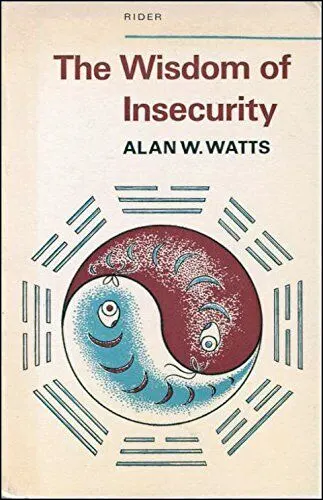
The Wisdom of Insecurity
This 1951 classic explores how our modern pursuit of security through money, status, and technology leads to anxiety. Watts artfully weaves Eastern philosophy and Christian mysticism to argue that seeking permanence in an impermanent world is futile. Rather, we must embrace the present moment and recognize the illusion of the ego. Watts writes breezily with penetrating insight about how relaxing our grip on life's impermanence paradoxically allows us to live fully. Though challenging at times, ultimately Watts' message brings great comfort in understanding the futility of chasing security. Give it a read and you may just find the wisdom that insecurity brings!
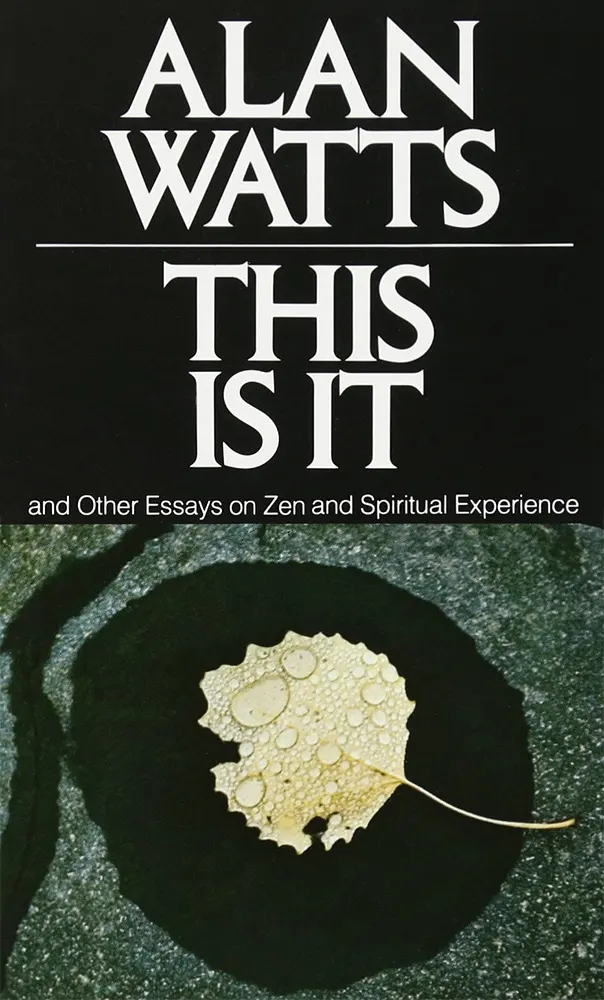
This Is It
and Other Essays on Zen and Spiritual Experience
Six revolutionary essays exploring the relationship between spiritual experience and ordinary life—and the need for them to coexist within each of us. With essays on “cosmic consciousness” (including Alan Watts’ account of his own ventures into this inward realm); the paradoxes of self-consciousness; LSD and consciousness; and the false opposition of spirit and matter, This Is It and Other Essays on Zen and Spiritual Experience is a truly mind-opening collection.

Thusness
Alan Watts discusses the concept of "thusness" or "suchness" in Eastern philosophy, exploring the meaning of the Sanskrit word tathātā and its potential to help us cultivate a deeper sense of presence and awareness in our daily lives.

Time and the Future
Immerse yourself in a mind-expanding seminar, where Watts illuminates the illusion of time and history, how our fixation on the future breeds anxiety, and how to break free and find fulfillment in the elusive present moment.

Transcending Duality
An exploration of the male and female symbolism in Tantric yoga and the unity of polar opposites as a form of resonance.

Transformation of Consciousness
Alan discusses the different states of consciousness which the human mind can attain, and some of the chemical compounds which may serve as tools to reach these mental realms.
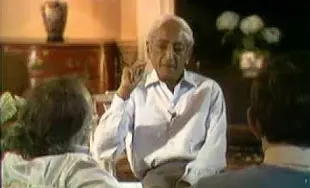
Are We Aware That We Are Fragmented?
Transformation of Man, Part 1
This trialogue between Krishnamurti, Bohm, and Shainberg methodically uncovers the nature of man’s psyche, his fragmentation, the limitations of a thought-based society, and finds out if there is a wholeness, a sacredness in life which is untouched by thought.

Truth and Relativity
Philosophy: East and West, Program 14
Through the example of a city, Alan encourages his listeners to reevaluate the definition of their personal identities. Is a person a fully autonomous agent, or might they be a cell in a vast organism? Perhaps it’s necessary to understand both perspectives and recognize that each scale of magnitude depends on all others to manifest as it does.

Turning the Head, or Turning On
Talking to an audience at San José State University, Alan Watts recounts the first time he tried consciousness-altering substances after meeting Aldous Huxley. He argues that Western society largely isn’t ready for the mystical experience which can be triggered in these mental states, but nonetheless advocates for them, as they may arouse positive transformation in the human collectivity.

Uncarved Block, Unbleached Silk
A delightful seminar in which Alan introduces his listeners to the details of Japanese and Chinese aesthetics.

Unity in Contemplation
Imagine peeling away the layers of your social self to reveal a cosmic peephole—that’s meditation, says Alan Watts, where you become the universe’s own eyeball, winking at itself. And here’s a divine chuckle: God’s not all furrowed brows and thunderbolts. Watts nudges us to float, not flail, through life’s spiritual circus. In a world gone madcap, he prescribes a dose of quiet contemplation—not as a grim duty, but as a playful plunge into life’s delicious absurdities.

Unpreachable Religion
Floating through this serene lecture, Alan Watts gently guides us to ponder our culture's materialistic illusion. In calm wisdom, he unveils our preoccupation with purpose over presence and the separation from our sensual nature. Watts lovingly calls us home to the sacred play inherent in life, no longer exiled from the body's temple. By joining life's mystical dance arising through us, we are caressed again by joy's timeless hands.

Unserious Wisdom
(Buddhist Mysticism)
While Pure Land Buddhism promises easy enlightenment through faith in Buddha Amitābha, Alan Watts explains how its eccentric followers, the myōkōnin, found wisdom by goofing off. With playful tales of the monk Ryōkan’s antics, from imitating tigers to forgetting letters mid-juggle, Watts shows how these rascal sages attained childlike wonder by ditching spiritual bootstraps for carefree acceptance of their flawed humanity. For the myōkōnin, the path to Buddhahood involved more fun and games than pious efforts.
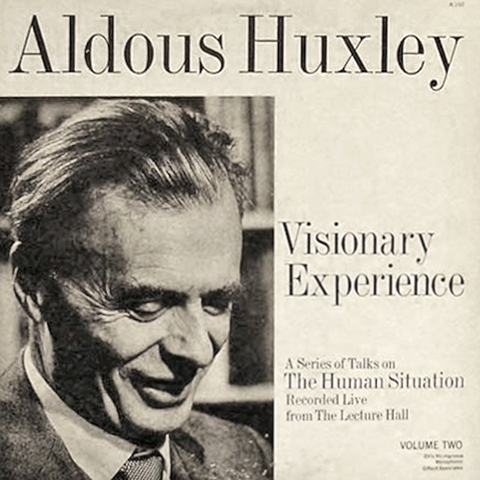
Visionary Experience
Aldous Huxley had been invited to the symposium by Timonthy Leary and Richard Alpert (Ram Dass). The two had met some months earlier, when Tim invited the author of the first two major works of modern psychedelic literature (The Doors of Perception and Heaven and Hell) to participate in the Harvard research program. Huxley agreed and was “Subject no.11” in a group psilocybin session run by Leary in November 1960.

Wash Yourself of Yourself
Ram Dass spins a winding tale—Sufi teachings, LSD paranoia, Buddhist insight—to drive home one unsettling truth: the end of the spiritual path is the end of you. Selflessness isn’t humility—it’s vanishing. When there’s no “you” left, only the Dharma acts, and the difference between life and death stops mattering.

Way Beyond Seeking
Alan reflects on key principles of Taoism, noting how even a fruit fly views itself as the pinnacle of creation—just as humans do. He explains how opposites like yin and yang rely on each other, like two sticks held in balance. Watts cautions against relying too heavily on words to capture life’s complexity. Yet, through stories and logic, he gently encourages us to embrace non-action, trust intuition, stay humble, and recognize our connection with nature. Taoist ideas to reflect on and savor.

What Is Now?
Rupert invites us to take a direct look at the present moment. His succinct investigation leads to stunning revelations about the nature of pure consciousness.
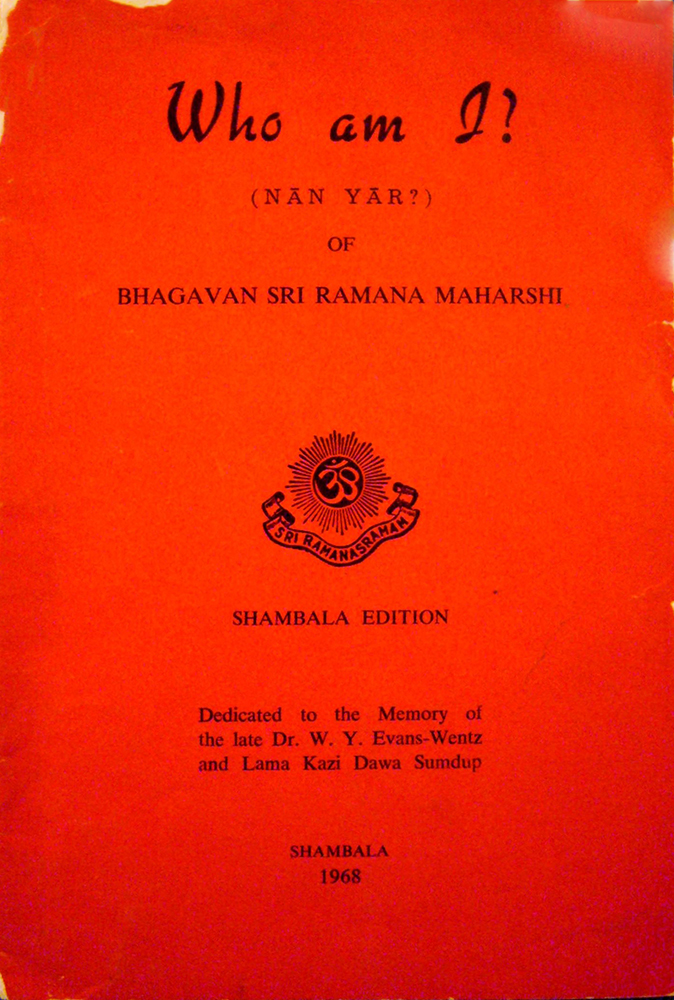
Who Am I?
A set of questions and answers on Self-enquiry that were put to Bhagavan Sri Ramana Maharshi by Sri M. Sivaprakasam Pillai in 1902.

Who Is It That Knows There Is No Ego?
Alan explores the idea of separateness, and whether our language has tricked us into falsely believing that things are individual, independent, and comprehensible all on their own.

Why Not Now?
Alan guides us through an intimate meditation session that explores the nature of “now” and the self through direct experience rather than intellectual understanding. Using a variety of sounds, breathing exercises, and physical movements, we experience presence without analysis or labeling.

Why a Science of Mind Implies the Transcendence of Nature
God and Computers: Minds, Machines, and Metaphysics (Part 5)
Have you ever wondered how your brain creates your conscious experience? Francisco Varela explores the intersection of science and spirituality, offering a fresh perspective on the age-old mind-body problem. Drawing inspiration from Buddhist teachings, he argues that our everyday human experience is the key to unlocking the mysteries of consciousness. Varela proposes a research program called neurophenomenology, which aims to bridge the gap between brain activity and subjective experience. Through engaging examples and insightful explanations, he demonstrates how the exploration of consciousness can lead to both scientific advancements and a deeper understanding of ourselves.

Wisdom of the Mountains
Alan unveils the esoteric path of Vajrayana Buddhism, a web of mantras and vivid symbols designed to plunge the seeker into the jeweled depths of inner consciousness. Through paradox and unconvention, one embraces the cosmic dance of opposites, letting go of ego efforts to realize the primordial state of spontaneous enlightenment. This way of fascination and surprise contrasts the ascetic vehicles, inviting one to become utterly absorbed in life’s mystery.

Wisdom of the Ridiculous
Alan Watts outlines the philosophy of Chinese thinker Zhuang Zhou, who believed in the value of useless things, relativity, and aligning with nature through “wu wei” or non-action. He used exaggeration and humor to argue against controlling life. Stories illustrate his ideas on uselessness and flowing with life's currents. Zhuang Zhou's approach contrasts with Western notions of God and law. Overall, his playful philosophy advocates not resisting the natural Tao or way of things.

World as Consciousness
Alan Watts guides us through Mahayana Buddhism to reveal that the world is not something we passively witness, but something we actively create—moment by moment. Wake up: reality is now, consciousness is all, and you are the dance itself.
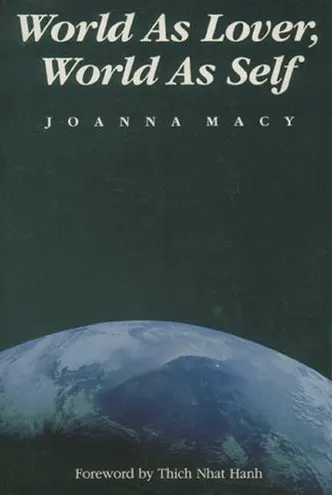
World as Lover, World as Self
This overview of Joanna Macy's innovative work combines deep ecology, general systems theory, and the Buddha's teachings on interdependent co-arising. A blueprint for social change, World as Lover, World as Self shows how we can reverse the destructive attitudes that threaten our world.

World as Play
Watts presents a core Eastern philosophy of the world as a dramatic illusion, and that it exists for no other reason except to be experienced in a playful manner.

You Are Not What You Look Like
Harding invites us to investigate who we really are, beyond appearances. He argues we are not the body we see in the mirror; rather, the mystics say we are the unseen awareness peering out. So look within and discover you are not merely a mortal form, but the deathless source beholding this mirage called “life.”

Zen Bones
Alan invites us to float like clouds and experience life directly instead of mediating it through concepts. Constant thinking takes us from the real. Open wide the mind’s doors, be here, flow present like water. Watts touches on meditation’s liberating power in realizing our true nature already within. Sit, walk, breathe; see through illusion’s mist, marvel at the mundane’s hidden jewels, embrace each now, wake up! Enlightenment’s sunrise awaits those who cease thinking. Realize you're already It and let life’s living magic move your feet.
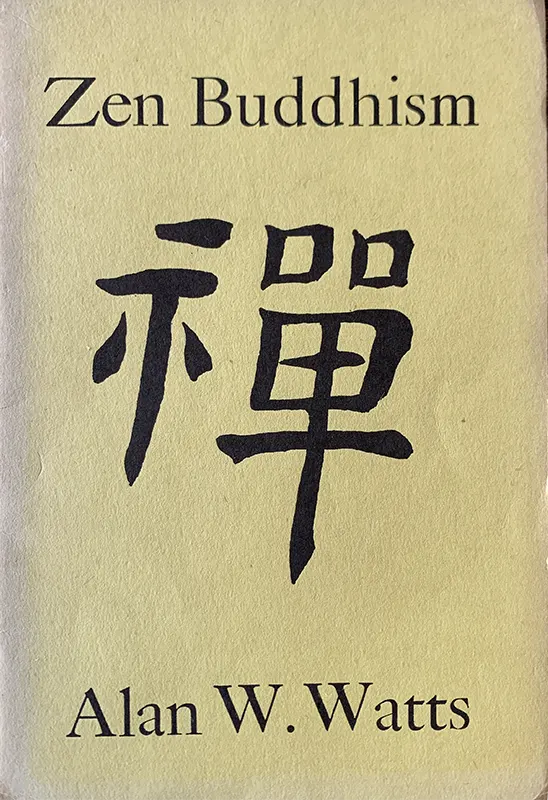
Zen Buddhism
This insightful booklet illuminates Zen Buddhism's iconoclastic yet practical approach to awakening one's mind to the timeless Reality beyond concepts. Watts skillfully conveys how Zen uses spontaneity, humor, and shock tactics to point directly to the ever-present "now." A thoughtful exploration for any seeker.

Zen Clues
A small group of students traveled with Alan Watts through Japan, and along the way they stopped to visit the temples and gardens of Kyoto, listening to Alan bring ancient kōans to life.

Zen Reconsidered
Is your mind playing tricks? Alan Watts reveals Zen isn’t about adding beliefs, but shedding the illusion of a separate self. Discover you’re already part of one vast, joyful cosmic dance—experience it directly for profound freedom!
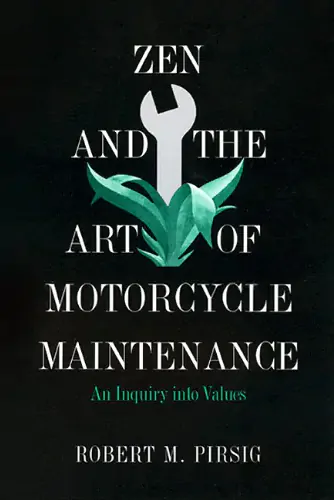
Zen and the Art of Motorcycle Maintenance
An Inquiry into Values
A father and son embark on a motorcycle road trip across the U.S., blending personal reflection with a deep philosophical exploration of life. The narrative examines the concept of “Quality,” a unifying idea that bridges art, science, and human values. Through vivid travel experiences and flashbacks to the narrator’s past, it questions the balance between rational thinking and intuition, the meaning of technology, and how people find purpose in their work and lives. It’s a journey of self-discovery and timeless insight.

Zenrin Poems
Alan Watts explores Zenrin poems: ancient verses used in Zen practice. He unveils their wisdom, revealing how everyday observations point to profound truths about our nature and the interconnectedness of all things, urging us to find the extraordinary within the ordinary.